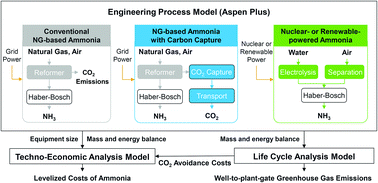イッテルビウム12ホウ化物の奇妙な挙動が解明される Strange behavior of ytterbium dodecaboride better understood
2022-08-04 アメリカ・ロスアラモス国立研究所(LANL)
YbB12は、一般的な金属とは異なり、実験条件下では優れた電気伝導性を示さず、電気絶縁体として機能する。
この材料は電気を通すように見えますが、実際には温度が下がると電気抵抗が非常に大きな値まで増加する。
この挙動を理解するために、実験では、物質中の移動電荷の数を数えるホール効果と呼ばれる量を、YbB12で初めて測定しました。これらのデータを総合すると、実験中にYbB12中の電子が再編成され、同居はしているがあまり混じり合わない2つの液体になったことがわかる。研究チームは、強磁場下で観測されたYbB12の特性は、2つの液体中の電子が衝突し、少し混ざり合って互いの挙動に影響を及ぼしたためであると結論づけた。
<関連情報>
- https://discover.lanl.gov/news/0804-maglab
- https://journals.aps.org/prx/abstract/10.1103/PhysRevX.12.021050
近藤絶縁体のホール異常、量子振動、リフシッツ遷移の可能性 YbB12: 非通常的な電荷輸送の証拠 Hall Anomaly, Quantum Oscillations and Possible Lifshitz Transitions in Kondo Insulator YbB12: Evidence for Unconventional Charge Transport
Ziji Xiang, Kuan-Wen Chen, Lu Chen, Tomoya Asaba, Yuki Sato, Nan Zhang, Dechen Zhang, Yuichi Kasahara, Fumitoshi Iga, William A. Coniglio, Yuji Matsuda, John Singleton, and Lu Li
Physical Review X Published 2 June 2022
DOI:https://doi.org/10.1103/PhysRevX.12.021050
ABSTRACT
In correlated electronic systems, strong interactions and the interplay between different degrees of freedom may give rise to anomalous charge-transport properties, which can be tuned by external parameters like temperature and magnetic field. Recently, magnetic quantum oscillations and metallic low-temperature thermal conductivity have been observed in the Kondo insulator YbB12, whose resistivity is a few orders of magnitude higher than those of conventional metals. As yet, these unusual observations are not fully understood. Here we present a detailed investigation of the behavior of YbB12 under intense magnetic fields using both transport and torque magnetometry measurements. The Hall resistivity displays a strongly nonlinear field dependence which cannot be described using a standard two-band Drude model. A low-field Hall anomaly, reminiscent of the Hall response associated with “strange-metal” physics, develops at T<1.5 K. At two characteristic magnetic fields (μ0H1=19.6 T and μ0H2∼31 T), signatures appear in the Hall coefficient, magnetic torque, and magnetoresistance; the latter characteristic field coincides with the occurrence of a change in quantum-oscillation frequency. We suggest that they are likely to be field-induced Lifshitz transitions. Moreover, above 35 T, where the most pronounced quantum oscillations are detected, the background resistivity displays an unusual, nonmetallic Tα behavior, with α being field dependent and varying between −1.5 and −2 By normalizing the Shubnikov–de Haas oscillation amplitude to this Tα dependence, the calculated cyclotron mass becomes more consistent with that deduced from de Haas–van Alphen oscillations. Our results support a novel two-fluid scenario in YbB12: A Fermi-liquid-like fluid of charge-neutral quasiparticles coexists with charge carriers that remain in a nonmetallic state. The former experience successive Lifshitz transitions and develop Landau quantization in applied magnetic fields, while scattering between both fluids allows the Shubnikov–de Haas effect to be observed in the electrical transport. The verification of this two-fluid scenario by the data in the current work strongly suggests that YbB12 represents a new phase of matter.



